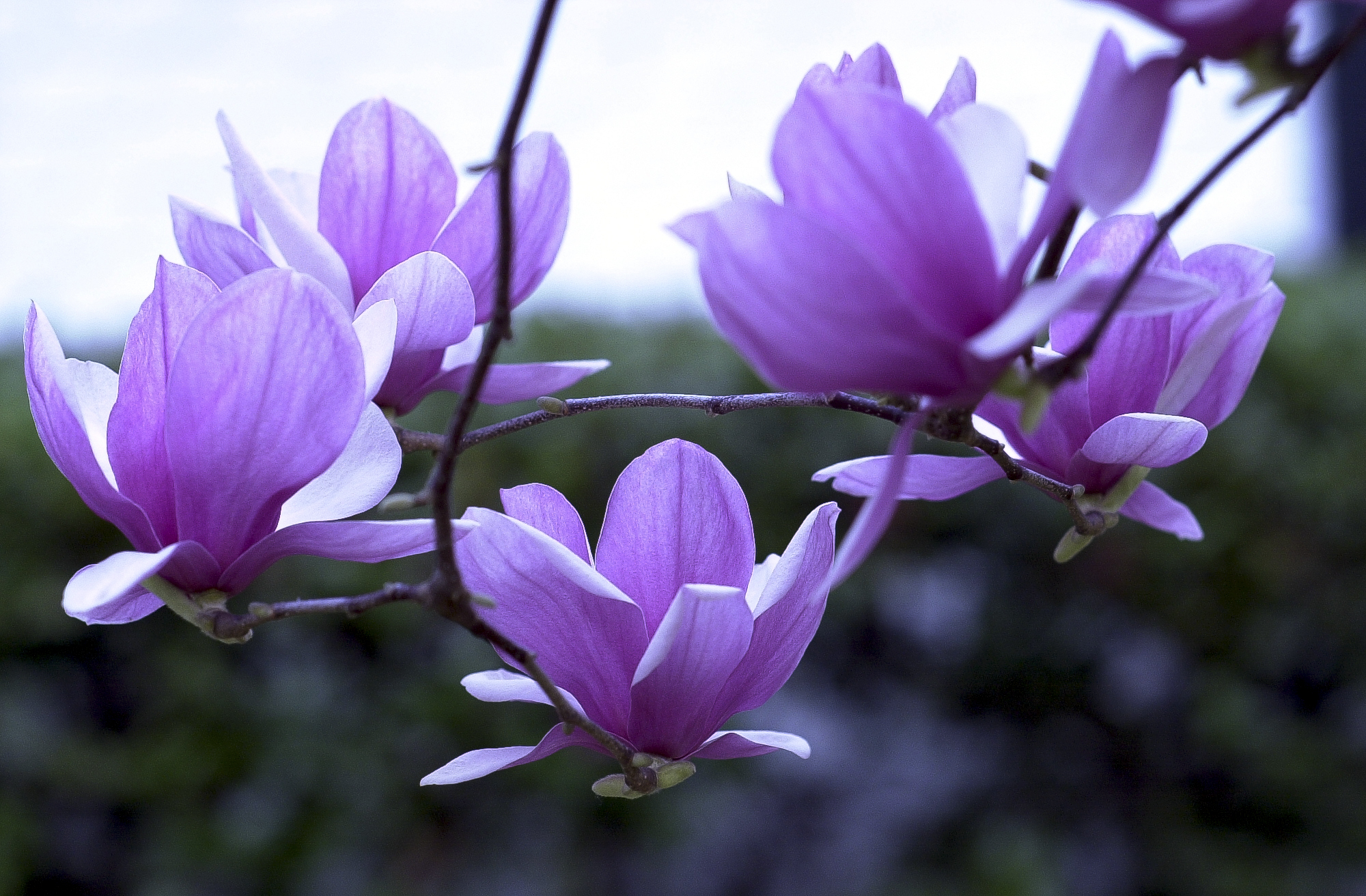
Up North, they look to large rodents (the nefarious groundhog) to predict the weather, but we in the civilized South have some very elegant trees that serve the purpose.
Have you seen the ‘saucer’ magnolias blooming around town? The Saucer magnolia (M. x soulangiana) will often predict a change of weather. In the near term, it has been said that the ‘saucer’ magnolia will bloom in advance of a freeze or very cold weather. I’ve heard folks even say this tree’s blooming, here in the South, actually attracts freezing temperatures out of the frosty North. But in the long term, the bloom of the ‘saucer’ magnolia forecasts the coming of spring. Oh, we may have a few more cold snaps, but spring is coming. The Saucer magnolia is “tellin” us so!
The Saucer magnolia (Magnolia x soulangiana) is an Asian import to America that has made itself comfortably at home; to such an extent, we can hardly imagine late winter without their bloom. The Saucer magnolia is a deciduous magnolia that can reach up to thirty feet in height and as much in width. The blooms appear in late winter and early spring in advance of the tree’s foliage. The tree blooms and prospers in full sun to partial shade, making it appropriate in any setting. These trees generally are grown as multi-trunk specimens; and as long as they are not planted in heavy, clay soil, they seem to thrive almost anywhere. They demand little special care, and once established are rarely bothered by disease or insect pests.
The Saucer magnolia can be found in nurseries in a bewildering variety of named cultivars. These are varieties that bloom from nearly white, pink, rose, to purplish red and burgundy.
Smaller is the Star magnolia (M. stellata). Star magnolias have a different flower shape. The blooms are more blousy and star-like, as its common name implies. I think of the Star magnolia more as a large shrub than as a small tree; although, if properly pruned, its shape and form can be very treelike. Late winter and early spring freezes sometimes catch them while they are in bloom, ruining the greatly anticipated beauty for which gardeners long. Sometimes gardeners can be exceedingly unlucky year after year, having their magnolia’s blooms repeatedly caught by untimely freezes. But when they finally do bloom in all their magnificence, gardeners are delighted and are willing to forgive a few seasons of frost-spoiled blooms.
This year the the Saucer magnolia is forecasting Spring’s ‘soon-coming’ with great elegance and panache.
The deciduous Magnolias are beautiful harbingers spring
